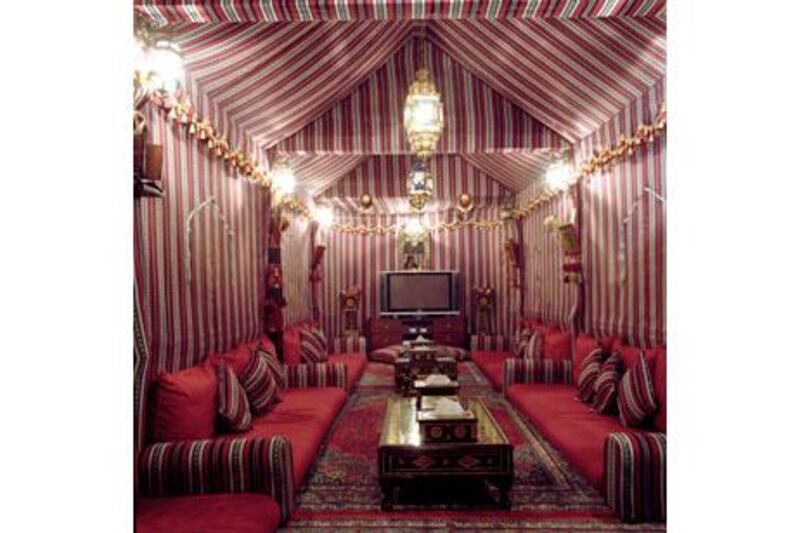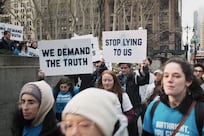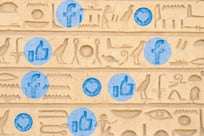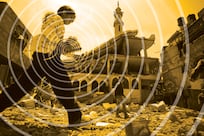The painter George Bahgory once said: “With every stroke of the brush, I recall an Egypt that I don’t want to disappear.”
A similar sentiment could apply to any of the artists who feature in Caravan, an exhibition at the Barjeel Art Foundation in Sharjah, which continues until February 20.
Art: The National looks
Exhibitions, reviews, news, features and all things art
[ Art ]
Caravan features 19 exhibits, spanning video, sculpture and painting – including two recent pieces by Bahgory. There's a good mix of modern masters, under-represented greats from around the region and a batch of contemporary names. All hinge on what Mandy Merzaban, Barjeel's curator, calls "the residue of nostalgia".
Sometimes this is nostalgia for a constructed idea of a romantic Middle East of the past. Others treat it more symbolically, staring back through time to a world that offered bolder, stronger ideals of who we are.
"Strike Oppose, our previous show which opened in March, was very relevant to what was going on in the region at that time," Merzaban explains. "Caravan is more a reflection of the values that we want to bring back."
The curator has worked closely with Barjeel’s collection of contemporary and modern Arab art to interrogate ideas about history and how it is made.
Each work is accompanied by a pithy curatorial explanation, and the catalogue includes question-and-answer features with two of the exhibiting artists – notably the Lebanese artist Mohamad Said-Baalbaki, who discusses his interest in how images and metaphors become malleable over time.
Both an accomplished painter and a conceptual artist, Said-Baalbaki talks about the large oil-on-canvas piece Trunks, featured in Caravan, which depicts a teetering stack of suitcases.
In his early work, he would paint suitcases to express anxieties about having to leave Beirut because of the civil war, and moving to Berlin. But as time passed, though he still painted suitcases, the symbolism of the images began to change for him: “I had made the decision to stay in Berlin, to build a home there and this decision took much of the anxiety out of my life,” says Said-Baalbaki in the catalogue. “I enjoyed a new-found freedom. So the suitcases took on another meaning, they began to symbolise hope and new beginnings rather than flight and danger.”
The Iraqi painter Faisal Laibi Sahi has two pieces in this show. One, The Coffee Shop 2, is a masterpiece of sensitive cubism and flickering, subdued humour. Laibi Sahi compounds the interior and furniture of a coffee shop in Baghdad into geometric planes, yet keeps the faces and features of his subjects softened and realistic. There's a porcelain purity to the composition of the strange little scene – two men, wearing clothes of an old yet timeless Levant, are sipping bright red tea and smoking shisha. A waiter, one eye a deadened blue, hovers near their table, while a woman in an antiquated style of hijab raises an eyebrow at the viewer.
It’s a fantastic work, and Merzaban agrees: “It’s good to see how he uses his love of Iraq, and you feel that nostalgia. It’s rare that you find people who are open enough to say that they just really enjoy painting.”
The Coffee Shop 2 is unabashed in its nostalgia, even more so when we realise that Laibi Sahi painted it in London, entirely from imagination and romantic memories of Iraq.
Another outstanding painting here is a concise piece by the Egyptian artist Chant Avedissian. King's Valley shows a grey, unspecified cavern, and two art gallery benches stuck into the sand. A pondering man in a blue jacket sits on one of these, smoking and staring at nothing. Avedissian has rendered this scene in such a sparse, tight way that the work is carried by its composition.
Keep an eye out as well for a video piece by the emerging Palestinian artist Shadi Habib Allah. This one is projected on to the floor, and is made to look like a portal into another world. Through it, we see line-drawing animations of a tribal society – hunting, being hunted, building fires to keep away the terror of the night, and murder among the ranks. “Habib Allah uses these archetypal scenes to talk about the relationship between power and fear in society,” says Merzaban. “By looking down on to them, it’s as if we’re judging this society.”
Caravan also includes work by the photographer Lamya Gargash as well as, among others, palm leaf sculptures by Ahmed Askalany, sculptural paintings by Diana Al Hadid and Lara Baladi's Oum El Dounia, a primordial soup of photographs that, together, evoke a desert scene and bright blue sky.
This is an exhibition with a clear curatorial focus, yet one that avoids laying it on too thick. Each artwork pivots on notions of memory and nostalgia, and to the way that images often create history while still being shaped by it, but there’s a freedom of ideas that still lets this shoot off in unusual and often challenging directions.
Caravan continues at the Barjeel Art Foundation in Sharjah until February 20
Follow us on Twitter and keep up to date with the latest in arts and lifestyle news at twitter.com/LifeNationalUAE





